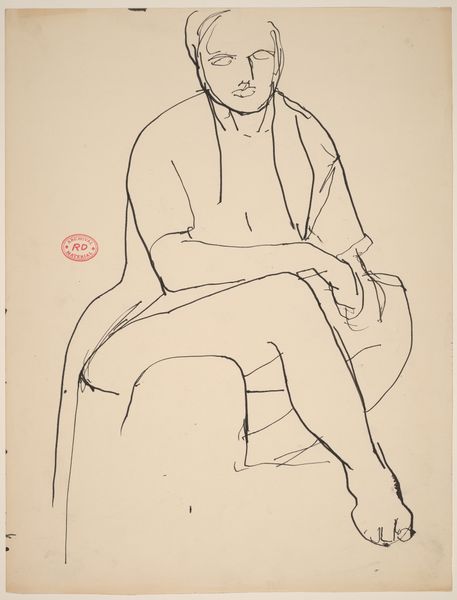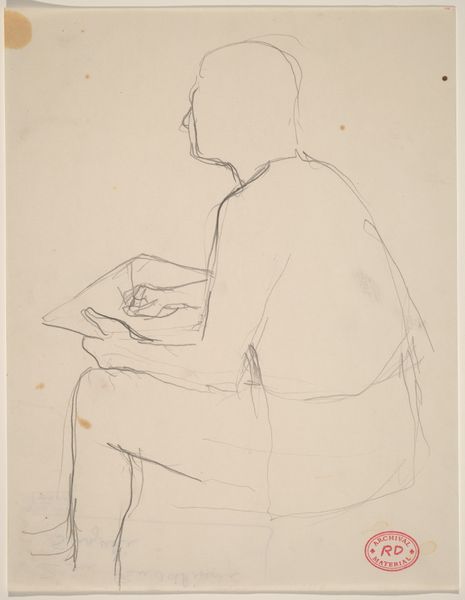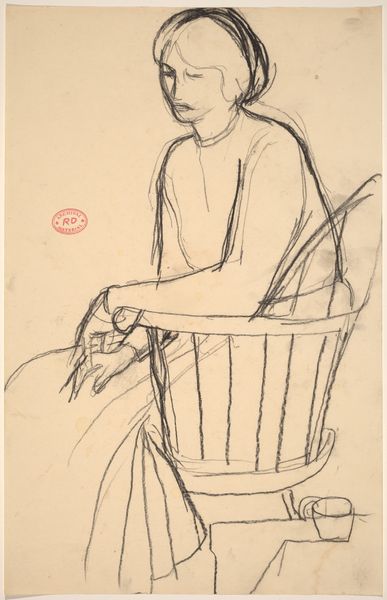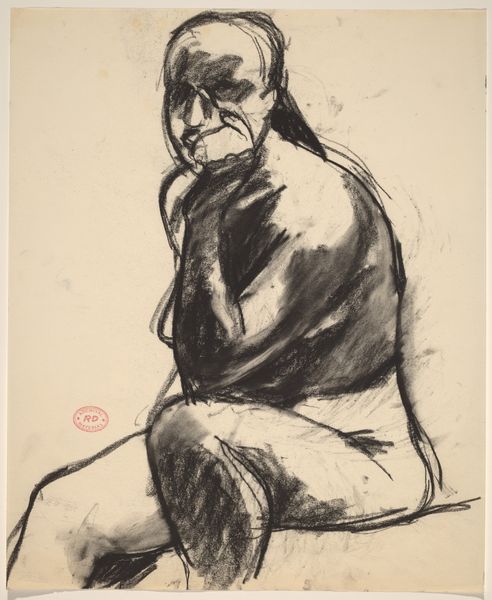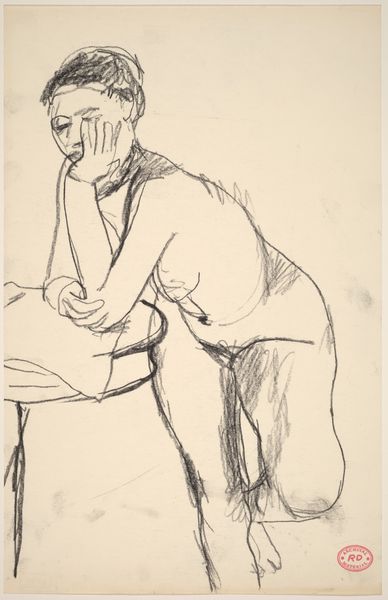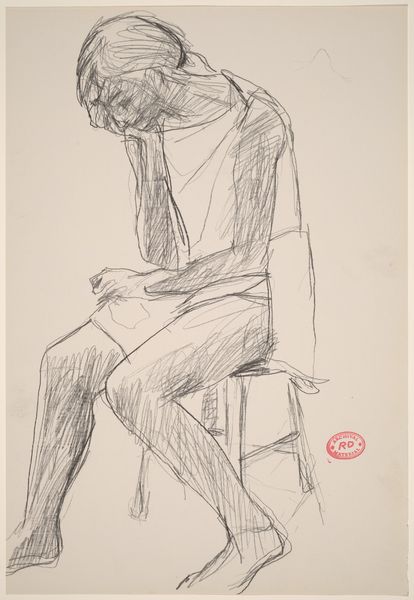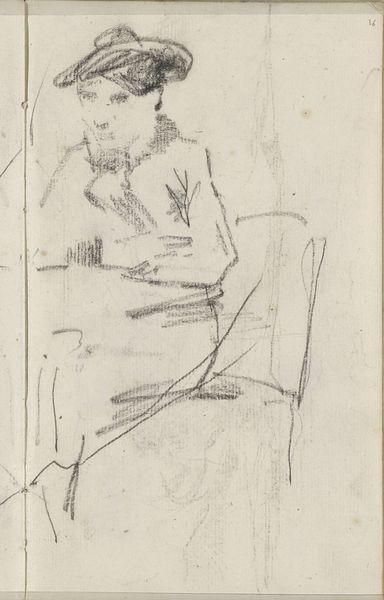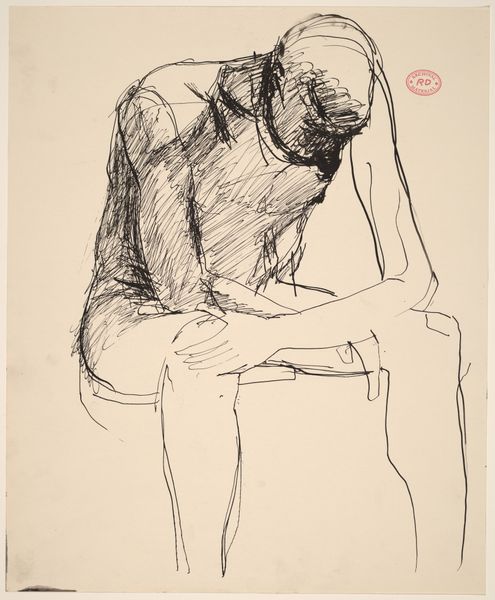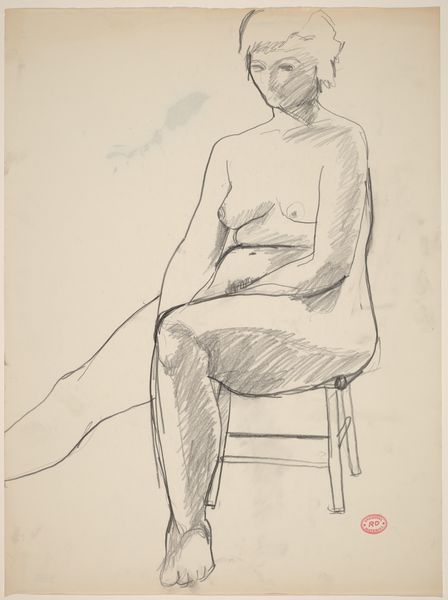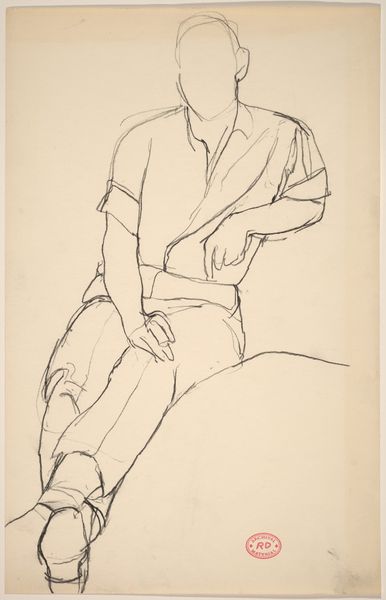![Untitled [woman seated at the edge of a cushion with hand covering her mouth] by Richard Diebenkorn](/_next/image?url=https%3A%2F%2Fd2w8kbdekdi1gv.cloudfront.net%2FeyJidWNrZXQiOiAiYXJ0ZXJhLWltYWdlcy1idWNrZXQiLCAia2V5IjogImFydHdvcmtzLzllMjJkOTE2LTA3YjgtNDE3Yy1iYjI2LTg4MmY2ZmI4Yjg1OS85ZTIyZDkxNi0wN2I4LTQxN2MtYmIyNi04ODJmNmZiOGI4NTlfZnVsbC5qcGciLCAiZWRpdHMiOiB7InJlc2l6ZSI6IHsid2lkdGgiOiAxOTIwLCAiaGVpZ2h0IjogMTkyMCwgImZpdCI6ICJpbnNpZGUifX19&w=3840&q=75)
Untitled [woman seated at the edge of a cushion with hand covering her mouth] 1955 - 1967
0:00
0:00
drawing, pencil
#
portrait
#
drawing
#
contemporary
#
figuration
#
bay-area-figurative-movement
#
pencil
Dimensions: overall: 43.2 x 35.6 cm (17 x 14 in.)
Copyright: National Gallery of Art: CC0 1.0
Editor: Richard Diebenkorn’s untitled pencil drawing from between 1955 and 1967 presents a seated woman with her hand covering her mouth. It feels like a private, contemplative moment. What strikes you about this piece? Curator: The apparent intimacy is interesting given Diebenkorn’s milieu. During the Cold War, figuration offered a potent counterpoint to Abstract Expressionism’s dominance. How might we understand this figure's posture – her hand covering her mouth – within that socio-political landscape? Is she silenced? Contemplative? What does it mean to represent the individual in such a gestural, almost incomplete way during a time of heightened political anxieties and social conformity? Editor: That's a fascinating point about the socio-political context! It definitely makes me reconsider my initial interpretation. I had thought about it more as a straightforward study of a figure in a moment of reflection. Curator: And that’s valid. But the "straightforward" is often where art history begins! Think about how the act of sketching itself, the preliminary nature of this drawing, also relates to the role of "finish" in artistic value. Did Diebenkorn exhibit drawings? Were they seen as equally important as his paintings? The art market often dictates what is seen and valued, shaping public perception. Editor: So, the museum's decision to showcase this "unfinished" drawing elevates its importance beyond its initial function as a study. It sort of becomes a statement in itself? Curator: Precisely! And consider Diebenkorn’s move from abstraction back to figuration. This return reflects a broader cultural re-engagement with the human form after the war. These choices are rarely isolated incidents, they reflect and shape artistic trends. Editor: That makes me appreciate how much history is embedded in what seems like a simple drawing. Curator: Indeed. The public life of art involves understanding that everything – from creation to display – is mediated by cultural forces. The drawing's journey, even decades later, shapes our understanding.
Comments
No comments
Be the first to comment and join the conversation on the ultimate creative platform.




